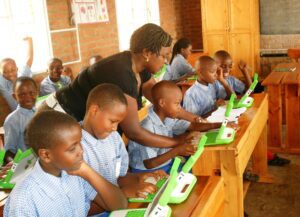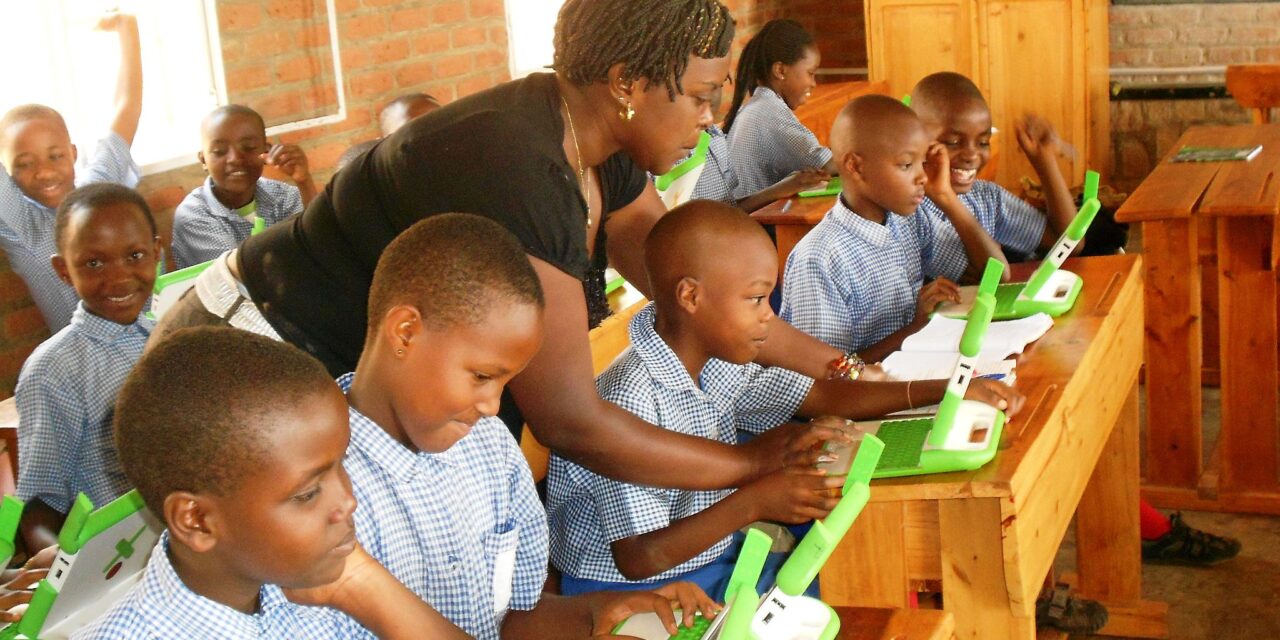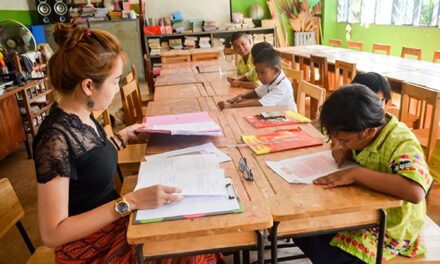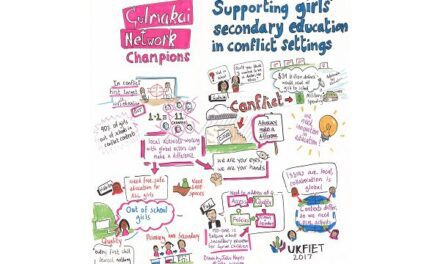This blog was written by Luke Stannard, a research consultant with Save the Children UK
At the UKFIET 2017 conference, researchers from Save the Children UK presented their preliminary findings of a rigorous review of the evidence related to educational technology use in emergency education provision. What follows is a brief summary of the final findings of this report.
Educational Technology (EdTech) has been proposed as a potential solution to solve the ‘learning crisis’ in humanitarian contexts. A recent study by Education International, Investing in the Crisis: private participation in the education of Syrian refugees, estimated that over 50% of Education in Emergencies programmes over the last 5 years have involved the use of EdTech.
Our Save the Children review of the literature, EdTech for Learning in Emergencies and Displaced Settings, was intended to help practitioners in the field engage with the ample academic evidence on the subject, in the hope of encouraging debate surrounding what constitutes quality EdTech engagement.
Quality education is one of the key focuses of the Sustainable Development Goals (SDGs) and the Education 2030 Agenda. With a growing desire to address this learning crisis, researchers at Save the Children UK have reviewed over 130 academic papers in an attempt to evaluate ‘what works’ with EdTech in displacement or ‘emergency’ settings as a potential solution to address the growing demand for learning.
A wealth of evidence confirms how EdTech can potentially positively impact on learning in stable contexts. An excellent map of the research in low-resource context is available from the HEART resource centre – Education Technology Map: guidance document. Despite all of this work, there is a real gap in research on EdTech use in emergency settings. Save the Children set about to examine which pieces of research from more stable and low-resource contexts were applicable in emergency situations.
The findings can be broken down into three key areas, starting firstly with the child, then focusing on the community in which they live and finally addressing the factors needed to produce the enabling conditions for effective technology use in emergencies.

Children in a Rwandan primary school, using laptops supplied by the One Laptop Per Child scheme https://commons.wikimedia.org/wiki/User:RudolfSimon
What follows below is a summary of the findings:
The child
- Hardware is not enough to improve learning outcomes.
- How the software works, or its pedagogy, is key to improving learning outcomes.
- EdTech must be tied to a curriculum. Learning that isn’t attached to previous learning gets forgotten.
- EdTech has to respond to the child’s level. For example, if a learner gets a question wrong, then the next question needs to be easier.
- Context is crucial. The culture the learner lives in has to be engaged through the software.
- Learners can teach themselves how to use the technology.
The community
- EdTech must support teachers, not replace them.
- Teachers’ and parents’ attitudes to technology are massively important to ensure successful use.
- Teachers and parents need training on how to get the most out of the technology.
- The community’s opinion on the importance of technology in education needs to be engaged with. It is not correct to assume that everyone will welcome the change.
The enabling conditions
- Infrastructure (e.g. electricity supply, internet access and safe storage facilities) must be assessed prior to engagement.
- Gender is not a factor in performance with technology, but access to EdTech can be gendered. This has to be considered on a case by case basis.
- EdTech can blur the lines between formal, informal, and non-formal learning.
- The wellbeing of every person involved is a crucial consideration. For example, spending all day by yourself, indoors, on a tablet, is likely to negatively affect your wellbeing.
The American historian Melvin Kranzberg, in a presidential address at the Society for the History of Technology in 1985, famously established his six truisms of technology. The first was that ‘Technology is neither good nor bad; nor is it neutral’. This is evidently the case with EdTech.
EdTech is an exciting educational tool – as with any new tool, it is important that we apply the learning we have engaged in prior to its arrival. We believe that EdTech can be an important tool in our collective aim of providing quality education for those in emergency situations.





